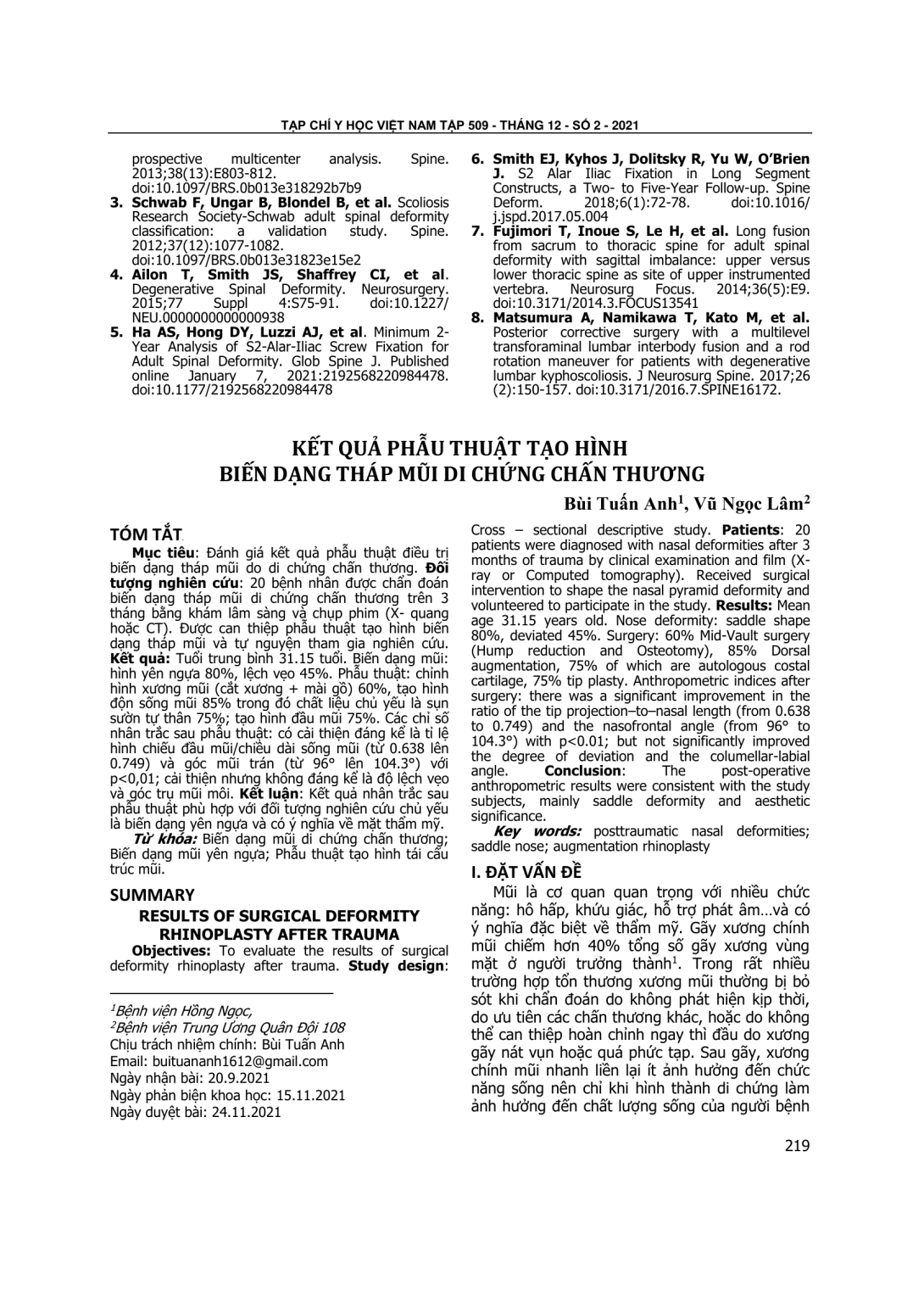
Đánh giá kết quả phẫu thuật điều trị biến dạng tháp mũi do di chứng chấn thương. Đối tượng nghiên cứu: 20 bệnh nhân được chẩn đoán biến dạng tháp mũi di chứng chấn thương trên 3 tháng bằng khám lâm sàng và chụp phim (X- quang hoặc CT). Được can thiệp phẫu thuật tạo hình biến dạng tháp mũi và tự nguyện tham gia nghiên cứu. Kết quả: Tuổi trung bình 31.15 tuổi. Biến dạng mũi: hình yên ngựa 80%, lệch vẹo 45%. Phẫu thuật: chỉnh hình xương mũi (cắt xương + mài gồ) 60%, tạo hình độn sống mũi 85% trong đó chất liệu chủ yếu là sụn sườn tự thân 75%; tạo hình đầu mũi 75%. Các chỉ số nhân trắc sau phẫu thuật: có cải thiện đáng kể là tỉ lệ hình chiếu đầu mũi/chiều dài sống mũi (từ 0.638 lên 0.749) và góc mũi trán (từ 96° lên 104.3°) với p<0,01; cải thiện nhưng không đáng kể là độ lệch vẹo và góc trụ mũi môi. Kết luận: Kết quả nhân trắc sau phẫu thuật phù hợp với đối tượng nghiên cứu chủ yếu là biến dạng yên ngựa và có ý nghĩa về mặt thẩm mỹ.
To evaluate the results of surgical deformity rhinoplasty after trauma. Study design Cross – sectional descriptive study. Patients: 20 patients were diagnosed with nasal deformities after 3 months of trauma by clinical examination and film (X-ray or Computed tomography). Received surgical intervention to shape the nasal pyramid deformity and volunteered to participate in the study. Results: Mean age 31.15 years old. Nose deformity: saddle shape 80%, deviated 45%. Surgery: 60% Mid-Vault surgery (Hump reduction and Osteotomy), 85% Dorsal augmentation, 75% of which are autologous costal cartilage, 75% tip plasty. Anthropometric indices after surgery: there was a significant improvement in the ratio of the tip projection–to–nasal length (f-rom 0.638 to 0.749) and the nasofrontal angle (f-rom 96° to 104.3°) with p<0.01; but not significantly improved the degree of deviation and the columellar-labial angle. Conclusion: The post-operative anthropometric results were consistent with the study subjects, mainly saddle deformity and aesthetic significance.
- Đăng nhập để gửi ý kiến
